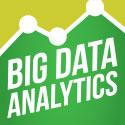
Wireless operators are gung ho about the potential for machine-to-machine communications, but they have yet to make progress with an analytical strategy for the burgeoning Internet of Things (IoT).
The operators want to find the value in the connections on their network to avoid having "data just for data's sake," but they are just trying to tackle the basics at this point, according to two TM Forum executives who are both focused on helping operators navigate big data analytics.
Rebecca Sendel, senior director of product management at the TM Forum, and Rob Rich, managing director of the Forum's Insights Research, joined Light Reading community members for a live chat this week, delving into analytics for IoT. Their consensus was that while operators see the value of analytics for IoT, they are still wading through the sheer volume of it. (See Live Chat: Small Sensors, Big Data Analytics .)
"I think a lot of focus is around how much data you need to keep," Rich said on the chat. "One [service provider] told me that 75% of their current big data spend goes into just collecting and storing data."
For a full transcript of the live chat, visit the live chat message boards on Light Reading.
The Forum executives echo recent Heavy Reading research that suggests IoT is still only around 2% to 3% of operators' overall revenue. While it has tremendous potential, they have just skimmed the surface of what's possible. (See Analytics in a World of SDN, NFV & IoT.)
The three IoT sectors attracting the most interest with TM Forum carrier members are digital health, smart grid and smart cities. Sendel says these are the fastest moving "in terms of looking at the whole picture of putting sensors in various places, then delivering services end-to-end across a number of partners, then making sure it is all working by collecting and analyzing the data."
And, Rich added, some operators are working to "bring the intelligence to the data" rather than move it all back to the core for analyzing. They are also still figuring out their role in what can be a complex web of partnerships for IoT. (See Cisco Paints IoT Into the Big Data Picture and Cisco Puts a Fog Over IoT.)
"I would say the [service providers] certainly want to have the end-to-end view of the customer and be the one that gathers the data and does the analysis -- they see this as a value-added service," Sendel said. "But I think it will end up a mixed bag."
As an example, she said those in the healthcare industry without IT or network-related experience would just assume they would have the ICT work done for them, but other industries might prefer the network operator just provide the pipe.
The TM Forum folks also noted that real-time streaming data analysis is all the rage right now, and operators need to improve their data management strategies to keep up. Rich said the "save everything" approach is just impractical now, even with lower price points for compute and storage infrastructure. He also stressed the importance of privacy and noted that he expects more regulation around data privacy laws to come.
Most importantly, however, operators working out their IoT analytics strategies will keep coming back to the business model, and won't move any further unless it makes sense from a fiscal perspective.
"Each implementation needs to be analyzed for its contribution to the bottom line," Sendel added. "Otherwise, it is a science project."
— Sarah Reedy, Senior Editor, Light Reading
About the Author(s)
You May Also Like




_International_Software_Products.jpeg?width=300&auto=webp&quality=80&disable=upscale)







